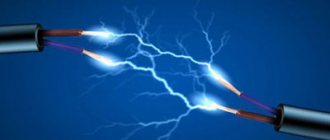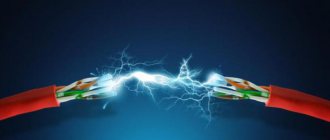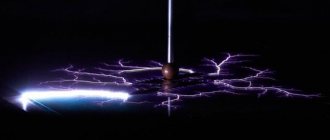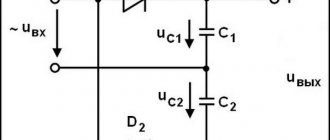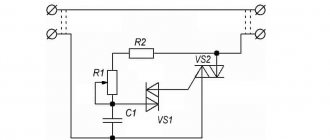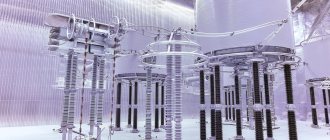In the modern world, every person has been exposed to electricity since childhood. The first mentions of this natural phenomenon date back to the times of the philosophers Aristotle and Thales, who were intrigued by the amazing and mysterious properties of electric current. But it was only in the 17th century that great scientific minds began a series of discoveries concerning electrical energy that continue to this day.
The discovery of electric current and the creation of the world's first generator by Michael Faraday in 1831 radically changed human life. We are accustomed to the fact that our lives are made easier by devices that operate using electrical energy, but most people still do not understand this important phenomenon. To begin, to understand the basic principles of electricity, you need to learn two basic definitions: electric current and voltage.
What is electric current and voltage
Electric current is the ordered movement of charged particles (electric charge carriers). The carriers of electric current are electrons (in metals and gases), cations and anions (in electrolytes), and holes in electron-hole conductivity. This phenomenon is manifested by the creation of a magnetic field, a change in the chemical composition or heating of the conductors. The main characteristics of the current are:
- The current strength, determined by Ohm's law and measured in Amperes (A), is denoted in formulas by the letter I;
- power, according to the Joule-Lenz law, measured in watts (W), is denoted by the letter P;
- frequency, measured in hertz (Hz).
Electric current, as an energy carrier, is used to obtain mechanical energy using electric motors, to obtain thermal energy in heating devices, electric welding and heaters, to excite electromagnetic waves of various frequencies, to create a magnetic field in electromagnets and to obtain light energy in lighting devices and various types of lamps .
Voltage is the work done by an electric field to move a charge of 1 coulomb (C) from one point on a conductor to another. Based on this definition, it is still difficult to understand what tension is.
In order for charged particles to move from one pole to another, it is necessary to create a potential difference between these poles (this is what is called voltage). The unit of measurement for voltage is the volt (V).
For a final understanding of the definition of electric current and voltage, an interesting analogy can be given: imagine that the electric charge is water, then the pressure of the water in the column is the voltage, and the speed of water flow in the pipe is the strength of the electric current. The higher the voltage, the greater the electric current.
What is alternating current
If you change the polarity of the potentials, the direction of flow of electric current changes. It is this current that is called alternating. The number of changes in direction over a certain period of time is called frequency and is measured, as mentioned above, in hertz (Hz). For example, in a standard electrical network in our country, the frequency is 50 Hz, that is, the direction of current movement changes 50 times per second.
Definition and properties
A galvanic battery produces a stable potential difference at the poles for a long time until the chemical reaction in it is completed. The current from such a source is called constant. A simple definition of alternating current, understandable for dummies and acceptable for specialists, can be constructed from the opposite: AC is a flow of charges in a conductor, periodically changing its magnitude and direction. In power supply networks it regularly changes amplitude and polarity.
These changes represent endless repetitions of a sequence of identical cycles that form a sinusoid on the oscilloscope screen, in contrast to DC, which is visualized as a straight line.
Since it follows from the definition of alternating current that changes in parameters are regular, alternating electricity has a number of properties related to the quality and form of its reflection on the graph. These basic properties can be represented by the following list:
Frequency. One of the most important properties of any regular signal. Determines the number of complete cycles for a specific period. Measured in hertz (cycles per second). In Europe, for power supply networks it is 50 Hz, in the USA and Canada - 60 Hz.
Period
Sometimes it is important to know the amount of time required to complete one cycle of an electrical signal, rather than the number of cycles per second of time. Period is a concept logically inverse to frequency, meaning the duration of one cycle per second. Wavelength
A characteristic similar to a period, but can be measured from any part of one cycle to an equivalent point in the next. Amplitude. In the context of electric current, this is the highest value of AC relative to neutral. Mathematically, the amplitude of a sine wave is the value of that sine wave at its peak. However, when it comes to power systems, it is better to refer to the concept of effective current. The equivalent is the amount of work that a direct current can do at a voltage equal to the amplitude of the alternating current under study. For a sine wave, the effective voltage is 0.707 times the amplitude.
In the case of speakers, the most important properties are frequency and amplitude, since all types of equipment are designed to comply with these parameters in the power line. The period requires attention when designing electronic power supplies.
Sources of electric current
An electric current source is usually a device or device that can be used to create an electric current in a circuit. Such devices can create both alternating and direct current. According to the method of creating electric current, they are divided into mechanical, light, thermal and chemical.
Mechanical sources of electric current convert mechanical energy into electrical energy. Such equipment are various types of generators, which, due to the rotation of an electromagnet around the coil of asynchronous motors, generate alternating electric current.
Light sources convert photon energy (light energy) into electrical energy. They use the property of semiconductors to produce voltage when exposed to light. Such equipment includes solar panels.
Thermal - converts heat energy into electricity due to the temperature difference between two pairs of contacting semiconductors - thermocouples. The amount of current in such devices is directly related to the temperature difference: the greater the difference, the greater the current. Such sources are used, for example, in geothermal power plants.
A chemical current source produces electricity through chemical reactions. For example, such devices include various types of galvanic batteries and accumulators. Current sources based on galvanic cells are usually used in autonomous devices, cars, and equipment and are sources of direct current.
A Brief History of Electricity
Who invented electricity? And no one! People gradually understood what it was and how to use it.
It all started in the 7th century BC, on one sunny (or maybe rainy, who knows) day. Then the Greek philosopher Thales noticed that if you rub amber on wool, it will attract light objects.
Then there were Alexander the Great, wars, Christianity, the fall of the Roman Empire, wars, the fall of Byzantium, wars, the Middle Ages, the Crusades, epidemics, the Inquisition and more wars. As you understand, people had no time for any electricity or ebonite sticks rubbed with wool.
In what year was the word “electricity” invented? In 1600, the English naturalist William Gilbert decided to write the work “On the Magnet, Magnetic Bodies and the Great Magnet - the Earth.” It was then that the term “electricity” appeared.
One hundred and fifty years later, in 1747, Benjamin Franklin, whom we all love very much, created the first theory of electricity. He viewed this phenomenon as a fluid or immaterial liquid.
It was Franklin who introduced the concept of positive and negative charges (before that, glass and resin electricity were separated), invented the lightning rod and proved that lightning is electrical in nature.
Everyone loves Benjamin, because his portrait is on every hundred dollar bill. In addition to his work in the exact sciences, he was a prominent political figure. But contrary to popular belief, Franklin was not the President of the United States.
Next will be a list of discoveries important for the history of electricity.
1785 - Coulomb finds out with what force opposite charges attract and like charges repel.
1791 - Luigi Galvani accidentally noticed that the legs of a dead frog contracted under the influence of electricity.
The operating principle of the battery is based on galvanic cells. But who created the first galvanic cell? Based on Galvani's discovery, another Italian physicist Alessandro Volta created the Volta column in 1800, the prototype of the modern battery.
At excavations near Baghdad, they found a battery more than two thousand years old. What ancient iPhone was recharged with its help remains a mystery. But we know for sure that the battery has already run out. This case seems to say: maybe people knew about electricity much earlier, but then something went wrong.
Already in the 19th century, Oersted, Ampere, Ohm, Thomson and Maxwell made a real revolution. Electromagnetism was discovered, induced emf, electrical and magnetic phenomena were linked into a single system and described by fundamental equations.
By the way! If you don’t have time to deal with all this yourself, our readers are now offering a 10% discount on any type of work
The 20th century brought quantum electrodynamics and the theory of weak interactions, as well as electric cars and ubiquitous power lines. By the way, the famous Tesla electric car runs on direct current.
Of course, this is a very brief history of electricity, and we have not mentioned very many names that influenced progress in this field. Otherwise, a whole multi-volume reference book would have to be written.
Converting AC to DC
Electrical devices around the world use direct and alternating current. Therefore, there is a need to convert one current into another or vice versa.
Direct current can be obtained from alternating current using a diode bridge or, as it is also called, a “rectifier”. The main part of the rectifier is a semiconductor diode, which conducts electric current in only one direction. After this diode, the current does not change its direction, but ripples appear, which are eliminated with the help of capacitors and other filters. Rectifiers are available in mechanical, electrovacuum or semiconductor versions.
Depending on the quality of manufacture of such a device, the output current ripples will have different meanings; as a rule, the more expensive and better the device is made, the less ripples and the purer the current. Examples of such devices are power supplies for various devices and chargers, rectifiers for electric power plants in various types of transport, DC welding machines and others.
War of Currents
Active use of direct current began at the end of the 19th century. Then Edison perfected the light bulb (1890) and founded the first power plants in New York that produced 110 volt direct current.
The use of direct current was associated with significant losses when transmitting it over long distances. Alternating current could not be used due to the lack of adequate meters and motors that operated on alternating current. The process of converting direct current into alternating current was also difficult. At the same time, alternating current could be transmitted over long distances without loss.
At that time, Nikola Tesla came to America from Serbia and got a job at Edison’s company. Tesla invented the alternating current electric motor, realized all the benefits and suggested its use to Edison.
Tesla and Edison
Edison did not listen to Tesla and also did not pay him his salary. Thus began the famous confrontation between inventors - the war of currents.
It lasted more than a hundred years and ended in 2007. Then New York completely switched to alternating current electricity.
Where is it used and what are the advantages of AC and DC current?
Various tasks may require the use of both AC and DC power. Each type of current has its own disadvantages and advantages.
Alternating current is most often used when there is a need to transmit current over long distances. It is more expedient to transmit such current from the point of view of possible losses and the cost of equipment. That is why most electrical appliances and mechanisms use only this type of current.
Residential buildings and enterprises, infrastructure and transport facilities are located at a distance from power plants, so all electrical networks are alternating current. Such networks power all household appliances, industrial equipment, and train locomotives. There are an incredible number of devices operating on alternating current, and it is much easier to describe those devices that use direct current.
Direct current is used in autonomous systems, such as on-board systems in cars, aircraft, ships or electric trains. It is widely used in powering microcircuits of various electronics, in communications and other equipment where it is necessary to minimize the amount of interference and ripple or eliminate them completely. In some cases, such current is used in electric welding work using inverters. There are even railway locomotives that run on DC systems. In medicine, this current is used to introduce drugs into the body using electrophoresis, and for scientific purposes to separate various substances (protein electrophoresis, etc.).
Types used
In most cases, what is called alternating current refers to electricity from the household network. For many people who are far from electrical and electronics, it would be a surprise to learn that AC refers to a much broader concept than electricity from an outlet.
A short list of alternating currents used in power supply networks:
- Single phase. Simple view, variable in direction. Its commercial type has a sinusoidal appearance on the graph and is transmitted over two conductors.
- Three-phase. Electricity for industrial purposes is usually supplied in the form of three separate sine waves with amplitude peaks one-third of a cycle apart. To transmit energy in this way, three (sometimes four) conductors are required.
- Full-wave rectified single-phase. Obtained from an alternating current using a rectifier in such a way that the reverse half of the cycle changes polarity. It can be thought of as a pulsating direct current with no interval between pulses.
- Fully rectified three-phase voltage. Unipolar current with slight ripple. This property distinguishes it favorably from DC.
- Half-wave rectified. It turns out after rectifying the AC in the simplest way by cutting off the part with reverse polarity. The result is a pulsating voltage at intervals with no potential difference across the terminals.
- Pulse voltage. Widely used in modern digital technology and electronics. In many cases, the wave is not a sine wave, but a rectangular one.
Modern devices use a wide variety of current forms, often simultaneously. Even lighting in the 21st century has changed beyond recognition since the days of Edison. A traditional incandescent lamp operated directly from the AC network, and its LED analogue pre-rectifies the sinusoidal voltage, then converting it to the required parameters without the help of additional devices.
However, the war of currents may continue in the very near future. The growing number of DC sources, such as solar panels and wind turbines, has stimulated the development of technologies to transport DC over long distances at losses comparable to AC transmission. Several such operating facilities have already been built in the world and, quite possibly, after some time they will demonstrate in practice their advantages over classical energy systems.
https://youtube.com/watch?v=tl8o5uU5V3c
Symbols on electrical devices and diagrams
Often there is a need to determine at what current a device operates. After all, connecting a device operating on direct current to an alternating current electrical network will inevitably lead to unpleasant consequences: damage to the device, fire, electric shock. For this purpose, there are generally accepted symbols in the world for such systems and even color marking of wires.
Conventionally, on electrical appliances operating on direct current, one line, two solid lines, or a solid line together with a dotted line, located one below the other, are indicated. Also, such a current is marked with the Latin letters DC . The electrical insulation of wires in DC systems is colored red for the positive wire and blue or black for the negative wire.
Edison and Tesla
Hippolyte Pixie managed to create the first alternating current generator in 1835. It was a permanent magnet device that worked by rotating a handle. Entrepreneurs of that time were interested in DC generation and did not quite understand where the invention could be applied and why it was necessary to obtain AC.
The real competition for electrical transmission standards began in the late 1880s. years, when the struggle began between the major energy companies for dominance in the market for their own patented energy systems. It was a rivalry between the electrification concepts of two great inventors: Nikola Tesla and Thomas Edison.
Edison invented and improved many devices necessary for the first direct current generation and transmission systems. Within a short time, his company was able to open more than 200 stations in North America. The enterprise grew, and the inventor hired Nikola Tesla, a young engineer from Europe, to carry out work on improving the equipment. The new employee brought to Edison's attention revolutionary work for that time, based on variable value technologies. Tesla's ideas were rejected and the inventors went their separate ways.
George Westinghouse, on the contrary, reacted to the discoveries of the Serbian engineer with great interest and bought all Tesla's patents. After the Westinghouse enterprise, it experienced many upheavals, including those associated with Edison’s powerful propaganda companies. The finale of the struggle came when Tesla's system was chosen to cover an exhibition in Chicago. This event introduced the world to the benefits of multiphase AC generation and transmission. Since then, most electrical devices and networks have been ordered to meet the new standard. The main dates of the War of Currents were:
- 1870 - Edison created the first DC generator;
- 1878 - Edison Electric Light Co. founded in New York;
- 1882 - Edison opened the Pearl Street generating station with 5 thousand lights;
- 1883 - Tesla invented the transformer;
- 1884 - Tesla invented the AC generator;
- 1888 - Tesla demonstrates a multiphase electrical system, Westinghouse buys his patents;
- 1888 - execution by electric chair, invented by Edison as a means of propaganda campaign demonstrating the dangers of Tesla's technology.
- 1893 - Westinghouse Electric Company triumphs at the Chicago Fair.
Alternating current and its properties
Alternating current cyclically changes direction and strength, characterized by the following parameters:
- frequency. The number of cycles (periods) per second. For example, the frequency of the current in the network is 50 Hz;
- amplitude. Maximum deviation of voltage and current from zero. Thus, the mains voltage changes from -311 V to 311 V 50 times per second;
- effective value. This is the voltage or strength of an equivalent direct current, that is, one that causes the same heat generation in the conductor as a given alternating current. The effective value is used to simplify calculations: working with constantly changing values is extremely inconvenient. For example, if you write in the formula the actual value of the alternating mains voltage, varying from -311 V to 311 V according to a sinusoidal law, you will get an equation with trigonometric functions or complex numbers. It is much easier to operate with a constant effective value of 220 V;
- form. The mains current produced by mechanical generators has a sinusoidal shape. At the inverter output it can be acute-angled, stepped, etc.
Alternating current is inferior to direct current in the following ways:
- it is of lower quality. Thus, the weld is stronger and more reliable if welding was carried out with direct current. The electronics also work better;
- at a frequency of 50 Hz it is more dangerous. It causes disturbances in the body already at a force of 50 mA, while constant - at a force of 300 mA. However, as the frequency increases, alternating current becomes less dangerous. Thus, the outstanding inventor Nikola Tesla, in public experiments, passed a high-voltage alternating current through himself (a lamp clutched in his hand glowed), having previously raised its frequency to several megahertz;
- The resistance of conductors to alternating current is higher than to direct current. An explanation of this will be given below.
But alternating current also has a useful feature: the magnetic field it creates is also variable, which means it can induce EMF (the law of electromagnetic induction) in conductors.
Alternating current makes it possible to operate the following devices:
- transformers. By increasing the voltage, losses in power lines are significantly reduced;
- induction heaters;
- throttle filters. Choke - coil. The alternating magnetic field it creates counteracts the alternating current, that is, the inductor acts as a resistance. The frequency of the current that it most strongly opposes depends on the inductance of the coil. This feature allows the choke to suppress high-frequency interference in the network.
The presence of an alternating magnetic field also explains the above-mentioned increase in conductor resistance. In it, the field also induces an emf that counteracts this alternating current. This EMF is higher in the center of the conductor, where the field lines are concentrated, and accordingly, charge carriers are forced out (surface or skin effect).
As a result, instead of the entire cross-section of the conductor, only a certain part of it passes current, which is why the resistance increases. Another difference between alternating current and direct current is the ability to flow through a circuit with a capacitor connected in series. For direct current, the gap between the plates is insurmountable, while alternating current flows almost freely, charging plates with one or the other sign.
A capacitor, like a coil, stores energy each time and then returns it to the circuit, so it also provides alternating current resistance, which depends on the capacitance of the capacitor.
Current differences
Ignorance of the differences leads to incorrect connection of voltage consumers to power supplies. This causes damage to appliances or worse, life-threatening situations.
Lethal current for humans
To clearly understand which current is called alternating and which is constant, you need to compare the parameters.
When comparing the characteristics of these two types of electricity, the differences are distinguished:
- Physical - with alternating current, the strength and direction depend on time. In a household network, the pulsation frequency is 50 Hz. The polarity changes in a sine wave 50 times per second. Direct current charge carriers do not change direction.
- Constructive - DC has “+” and “–” on its terminals or contacts, while AC has “zero” and “phase” on its electrodes. In the case of a three-phase network, there are 4 contacts: one “zero” and three “phase”.
- The principle of generation is that direct current is obtained as a result of electrolytic and chemical oxidation reactions, the operation of direct current generators and solar panels. Alternating current is produced by three-phase generators.
- In conversion - both types are obtained by converting one into the other using semiconductor rectifiers and inverters.
For information. There are two main standards for frequency and voltage in the consumer AC network in the world. The European standard is 50 hertz, 220-240 volts, and the American standard is 60 hertz, 100-127 volts.
Voltage formula
There is a formula in physics, although it has no practical application. The official formula is written like this.
voltage formula
Where
A is the work done by the electric field to move a charge along a section of the circuit, Joules
q - charge, Coulomb
U—voltage on a section of the electrical circuit, Volts
In practice, the voltage across a section of a circuit is derived through Ohm's law.
It will be interesting➡ Instrumentation mechanic: professional features and difficulties
voltage from Ohm's law
Where
I - current, Amperes
R - resistance, Ohms
DC Characteristics
Direct Current or DC in English means a similar variety, which has the inherent property of not changing its parameters over any period of time. A small horizontal line or two parallel lines with a line drawing of one of them is a graphic representation of direct current.
Scope of application: most models of household electrical appliances and electronic devices, including computer equipment, televisions and gadgets, use in home networks and cars. To convert alternating current into direct current in the outlet area, voltage transformers with rectifiers or specialized power supplies are used.
A common example of DC consumption is almost all power tools that operate with batteries. The battery device remains in any case a constant power source. Conversion to variable is achieved, if necessary, with the help of inverters - special elements.
